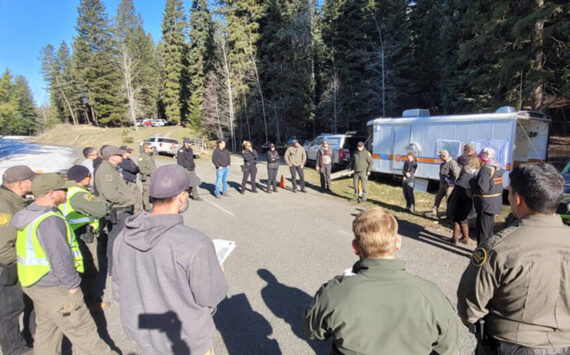Public Hearing scheduled before board meeting
TONASKET – The need to expand and upgrade facilities is still there; the money, however, is not.
The Tonasket School Board called a special meeting Monday, Feb. 17, to try to figure out its next move in the wake of the failure of its $6 million bond measure for several planned construction projects.
Though the election won’t be certified for a week, the bond was just over five percent shy of the 60 percent supermajority needed to win at the ballot. The measure led 990-831 (54.37 percent) but would have needed 1093 to pass.
The maintenance and operations levy, however, was passing with a county-high 64.24 percent of the vote.
If passed, the bond would have funded the construction of an additional wing, or “pod,” in the elementary school; expanded the shop area and added classrooms to the middle and high school; replaced the portable that currently houses the Alternative and Outreach schools; and upgraded/refurbish the athletic facilities, including the building of bathroom/concession facilities.
The board was seeking public comment and received plenty of it, including a number of questions and comments they apparently had not encountered during their campaigning efforts over the last six weeks that included meetings with about 20 community and civic groups.
Seeral patterns that the board will need to address came out of the session, which lasted nearly two and a half hours.
First, voting patterns from individual precincts indicated that the bond received far more support from areas nearer the city. Outlying areas such as Aeneas Valley, Wauconda, Loomis and Pine Creek voted heavily against the bond.
Second, there was definitely more support for some portions of the project than for others.
Third, there were multiple reasons that people chose to vote against the levy that may not be easily untangled.
Several comments revealed that there is public discomfort with the function of the Alternative School and the Outreach Program, which are two separate programs housed in the decaying portable near the tennis courts. Some of the most pointed comments of the night came from those who felt that the alternative students should be plugged back in with the mainstream high school. Others defended the need for the program based on the need to graduate students with a wide variety of learning styles and needs, and cited a number of success stories. At any rate, there was some indication that a number of “no” votes might have swung the other way without the inclusion of a rebuilt Alternative School.
There were also indications that many “no” voters felt that two much money was allocated to the athletic facilities, including the bathrooms.
There was also further discussion about how changes in education, including (but not limited to) state law mandating reduced class sizes, meant that a facility that at one time housed more than 1,200 students not has crowding issues with just over 1,050 students.
Other comments alleged a lack of trust by community and school staff in the board and administration to do what they promised, while others felt that a core group of naysayers have been on the same page for decades.
Still others felt that the bond measure may have been more readily accepted had the public been asked first what they were willing to support.
Board member Catherine Stangland, however, defended the board as having put together a package that addressed what was needed by the students.
The board tasked superintendent Paul Turner with ensuring that a survey for the community would be ready for approval at the next meeting; GEAR UP coordinator Bob Ashmore had a preliminary version of a survey on hand that was discussed and will be used as a starting point for the final product.
The board needs to decide within the next few weeks whether to try again at on the next available election date, which would need to be filed by March 6.
If the board determines after getting further public input that the proposal needs to be changed (as opposed to continuing its public education efforts), it may need to be run at a later date.
The board voted to hold a second public session prior to next week’s regular board meeting. The bond discussion will begin at 7 p.m. on Monday, Feb. 24, with the regular meeting postponed until 8 p.m.






